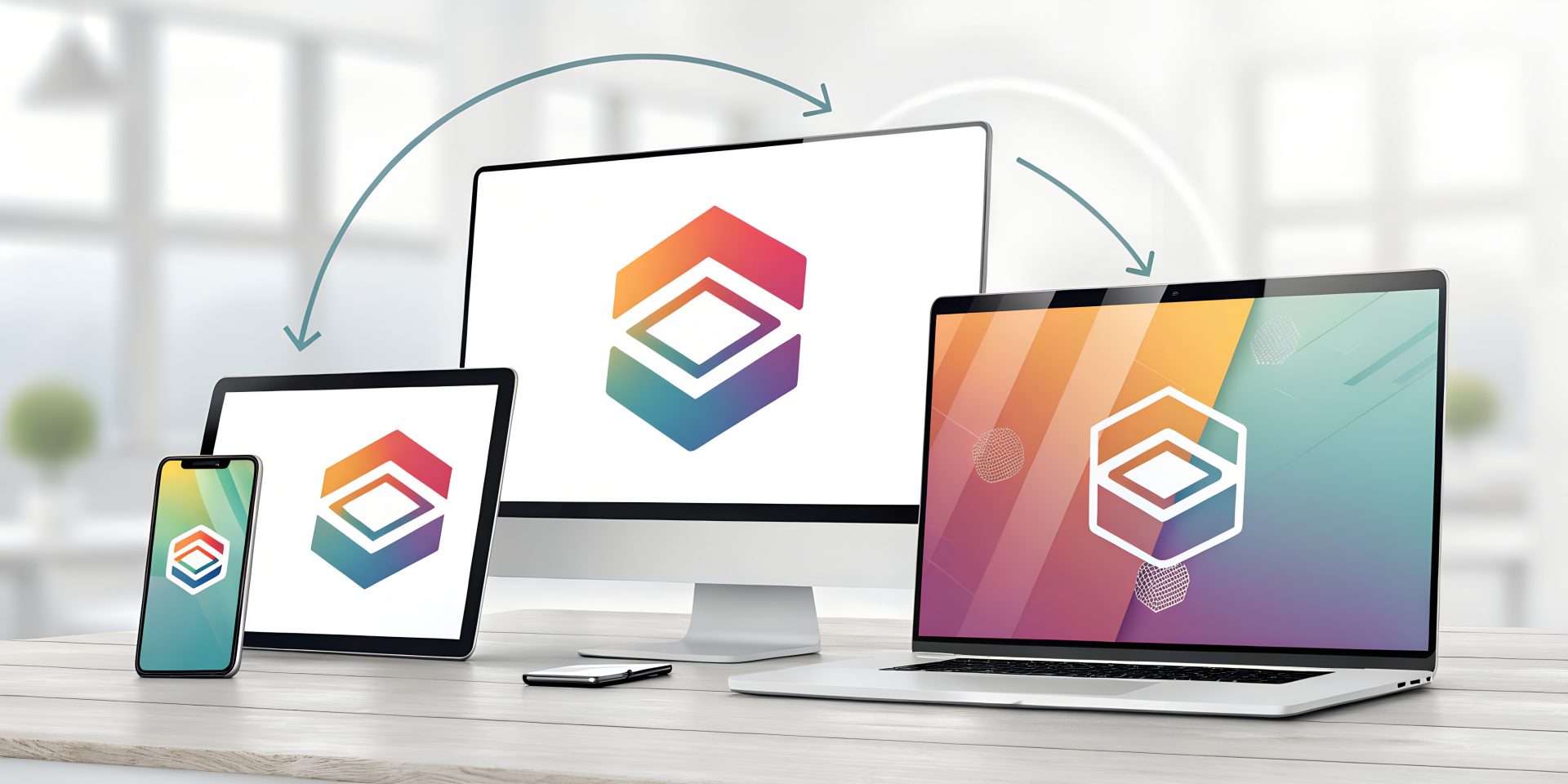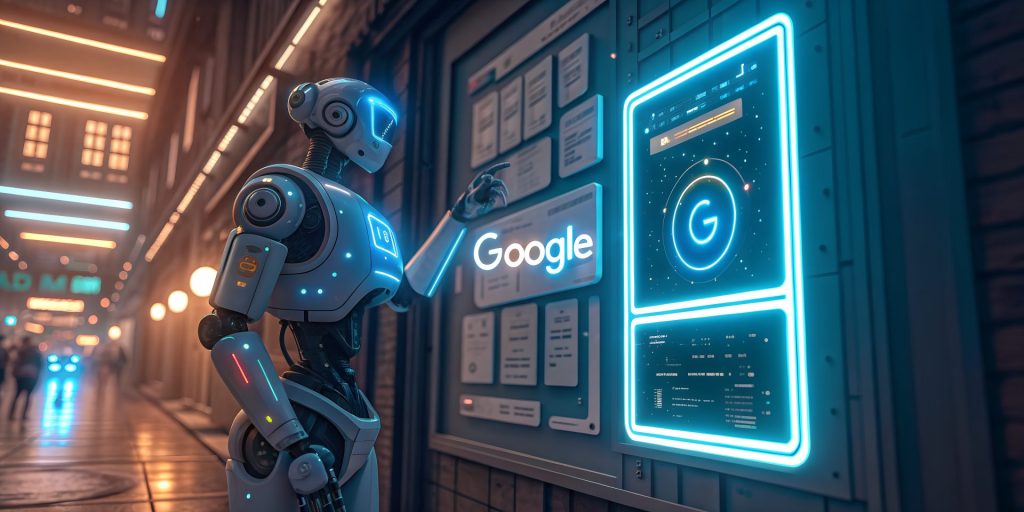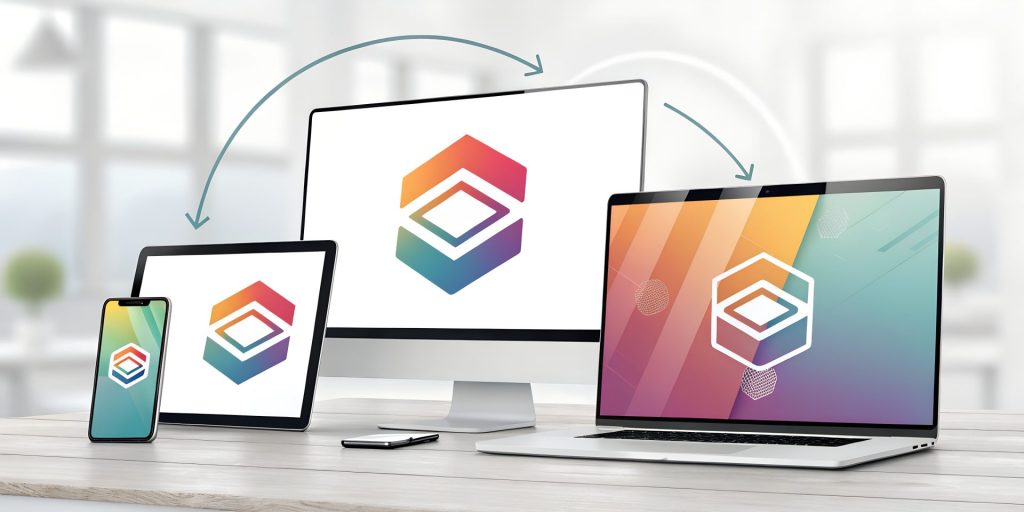In this digital age, when brands can be found not only physically but online, a brand’s identities go beyond static images and colours. Motion brand identity, which is how elements change, move in a way, and communicate with the user, is a vital aspect of the way a brand represents its online presence. It brings personality, depth and passion to the digital footprint of a company, which makes user experiences lively and engaging. You require a logo that represents your brand’s core values and acts as a means to distinguish your business’s identity. You need more than that. You need an identity that does what you want it to do for your company.
There are many kinds of logos. In this blog, I’ll try to explain what a dynamic logo is, the reason you should choose motion brand identity, and the best way to make a dynamic logo in a matter of seconds.
Why Motion Design Matters for Brand Identity
Motion design can enhance a company’s online presence through interactive interactions that connect people on a more personal scale. It aids in communicating important messages of the brand, evokes emotions and strengthens branding recognizability.
Motion Reflects Brand Personality
Each brand is unique and has its character, and motion design lets the personality of the brand be seen. When a brand is looking to be seen as lively, elegant as well as playful or even professional, motion design can effectively communicate these characteristics efficiently and clearly. In the case of a tech company, it might employ fast, rapid, sharp changes to show its agility and creativity. In contrast, luxury brands might use smooth, delicate animations that convey class and elegance.
Enhances User Experience
An attractively designed brand is one which not only looks great but also is comfortable to be around. Motion design improves the user experience by guiding them to a site in a logical manner. Animations give visual clues to enhance navigation and make interactions more interesting. The seamless experience forms an integral part of a brand’s identity. Users are able to remember the brand’s feel as they engage with it on the internet.
Strengthens Brand Recognition
As colours and logos assist users in recognizing an organization, the motion style can be a way to increase recognition. The consistent use of certain motion designs, like how things appear on the screen or the way buttons react to clicks, establishes a feeling of the impression of familiarity. People are able to identify these actions with the brand and increase the brand’s recognition as time passes.
The Fundamentals of Motion Design for Branding
In order to effectively utilize motion designs to create the brand’s identity, it’s essential to comprehend the basic principles of motion as well as how they are related to branding. We’ll look at the most fundamental elements that can help to create a powerful motion-based brand image.
Timing and Easing
The speed at which elements move — how fast they move, as well as how fast or slow they go–has an effect on how the brand’s image is perceived. Timing and easing (the amount of time between changes in animation) are crucial in determining the mood of an animation.
Example: Using Easing to Reflect Brand Tone
Animations that ease in and out, in which elements begin and finish slowly, tend to feel sophisticated and thoughtful, which is why they are suitable for top-end brands.
Animations that are fast or linear, in contrast, look modern and energetic and could be a good fit for brands that focus on youth culture or technology.
Consistency in Motion
A consistent motion design will ensure that users’ experience remains consistent across every touchpoint. As you would not alter the logo of a company on multiple websites, motion designs must follow a set of guidelines that match the identity of the brand.
Consistent Transitions
If the brand you represent utilizes fade-ins on a particular section, you should consider implementing similar motions on other areas of your website. Consistency does not just make users’ experience more enjoyable, but it also helps establish brand recognition because the motion itself becomes recognized as an element of the branding.
Purposeful Motion
The design of motion should not be made at random. Each movement must have an objective, be it drawing attention to users, highlighting a call-to-action or bringing attention to important branding elements. A purposeful movement helps convey the story of the brand by making it feel easy to use and user-friendly.
Example: Purpose-Driven Motion
A slight hover effect in a photograph of a product could suggest that the customer is able to click on it to learn additional details. Likewise, a loading animation might represent the character of the company (e.g. a fun loading symbol for a fun and casual-looking brand). The little details add up to form a coherent visual narrative for the brand using motion.
What is a Dynamic Logo?
The dynamic logo is able to change and change in accordance with the setting in which the logo is being utilized. In contrast to static logos, dynamic images are intended to evolve according to the environment they’re in.
There could be a chance that some part of the logo has changed (like the position of an icon or the arrangement of the colours) or the whole design undergoes updating every time the logo is shown.
It’s crucial to note that the essential components of your logo must be consistent. It doesn’t matter if it’s the icon, font or colour palette; it’s important to include aspects that stay the same to ensure that people are able to recognize your brand regardless of the format.
It’s the difference that separates dynamic logos from simply putting a lot of non-related logos and calling these logos “dynamic.” See the difference?
There will be a variety of variations on your logo’s core. It will also be the basis for other logos that are dynamic.
Why Should You Use a Dynamic Logo?
An engaging logo can enhance your branding name. This is a way to showcase your creative flair and satisfy the need to experiment. The use of a dynamic logo is an additional way of making sure your company’s mark is seen in all ways that it can be and lets you expand your entire branding.
Context is everything.
The logo can be seen across various devices and locations. The dynamic design allows it to react to any gadget or surface it’s displayed situated on. The logo you choose to use can appear on your business cards as well as the homepage of your website. However, you’ll need to alter or reduce the size to fit the Instagram photo profile.
The elements are being redesigned without compromising the messaging and the core images, regardless of where the logo’s location is.
If your online marketing strategy is to show off your knowledge in a particular field, however offline, you’d like the attention to remain on how healthy and wholesome your business is. A vibrant logo will be a reflection of both.
It is a symbol of versatility.
A logo that is different in every version creates the impression that your company is a thriving entity with many strengths. This shows that you’re in tune with the times while being true to who you are as a person.
FedEx is a fantastic illustration of a business that uses animated logos. The text under their company name alters, as does the hue of the text. A playful dog carrying packages is one of the nicest features of homes that offer delivery services.
Everybody can get involved.
In contrast to static logos, your colleagues, your team and family members are able to help you come up with suggestions for various versions of your active logo. It is important to discuss ideas with trusted people to make sure your logo’s impact is noticed and sticks out, staying away from your original concept.
It enhances the identity of your brand.
The logo you choose to use can affect how your company is viewed, and an active logo will help propel your company to new heights. When your company is more widely known, the public will start to anticipate your ideas for the next time around.
For an illustration of a business with a logo that is dynamic successfully, Google stands out. Google has a distinctive logo for every occasion, and its fans are always looking forward to a fresh logo now and then and are never satisfied!
How to Create a Dynamic Logo
Now that you understand the meaning behind it and the reason you need to use it let’s look at how you can create an engaging logo.
Pick the element with the most dynamic.
There are a variety of design components in the making of a logo. These include images, colours, as well as iconography and motion.
Images
Images are a major component of the dynamic logo. The image is often the most recognizable element of your logo. It’s designed to represent the brand with a single image.
AOL, as well as Nickelodeon, are well-known for this. The network for children’s programming, for instance, employs an individual icon for every show yet keeps its vibrant bright orange font across. This speaks to its fun-loving side but is still instantly recognizable in each and every variation of the brand’s logo.
Colours
MTV employs colour change in a way that is effectively using colour change, switching the colours of”MTV” and “TV. “M” and “TV” within each variation of their brand logo. Their ability to modify the colour scheme permits MTV to be as innovative and as diverse as the songs they put out.
Icons
To encourage tourism to regions like the Nordkyn peninsula (which is located at the very top of Europe), The active logo was developed to represent the changes that occur in the region in temperature and direction of wind. The website for tourism features the icon of the logo changes form, colour and direction every five minutes, based on the actual meteorological data.
Movement
The addition of the motion of your logo creates a dynamic image in real-time because it alters before your potential customer’s attention! This is a fantastic option to make your logo appear in the media and convey the impression that you’re an innovative, imaginative brand.
Shazam is an application which identifies music based on the size of a clip and makes use of movement in its logos to signify a speaker is always playing. This indicates that their service is that the music doesn’t stop.
Consider your core logo
Certain elements of your design should remain throughout the various versions of your logo. Keep in mind that the purpose behind an image (dynamic or not) is to portray the business you run. While a captivating and engaging logo is essential, what’s perhaps more vital is keeping it within the branding family.
Keep a simple design
Simple logos emphasize the essential elements of the brand’s character. It is important to focus on elements such as the colours and fonts, as well as reducing ideas to the simplest of forms. A logo should not be cluttered and crowded. By keeping it simple, your logo is successful.
Consider the versatility
An effective dynamic logo may be utilized in a range of shapes, ways and settings. Selecting a logo that is able to be printed, sized, or used on various mediums can make your company more noticeable to your intended public. One of the most effective ways to make your logo flexible is to contemplate the places you’ll be using it (business cards and social media platforms, website logos, products, etc.).
Points to Consider Before Creating a Dynamic Logo
It’s enjoyable, it’s interesting. It’s interesting, and fascinating, but a vibrant logo may not be ideal for everyone. When you’re choosing the kind of logo you’d like to develop to promote your company, consider that the following points are important:
Be careful not to confuse “dynamic” for “better”
The standard logo is still the most popular type of logo, particularly when the goal is to convey a sense of permanence and timelessness surrounding your company’s brand. However, they allow your company to be constantly innovating and may fall consistent with the image that you wish to create for your company.
The dynamic logo should be able to stand on its own
Keep in mind that your customers can interact with your brand at multiple points in time and through different media, and the logo that they view may be the only one that they will connect with your company. Therefore, each variant of the logo should be backed by a solid foundation that supports your brand’s entire image all in one go.
Conclusion
Motion design has become an effective tool for creating a brand’s identity online. When utilized with care, motion will reflect the personality of a brand, enhance the user experience and build lasting connections with the users. When digital experience becomes more dynamic, those brands who invest in deliberate, continuous, consistent and efficient motion-related design can stand out from the crowded world of online.
Trib Dots believes that motion design should form an integral component of every modern brand strategy. If you follow the guidelines and the best practices laid out in this post, You can leverage your power through motion in order to make a lively, interactive and distinctive brand image which resonates with your customers across every digital channel.






